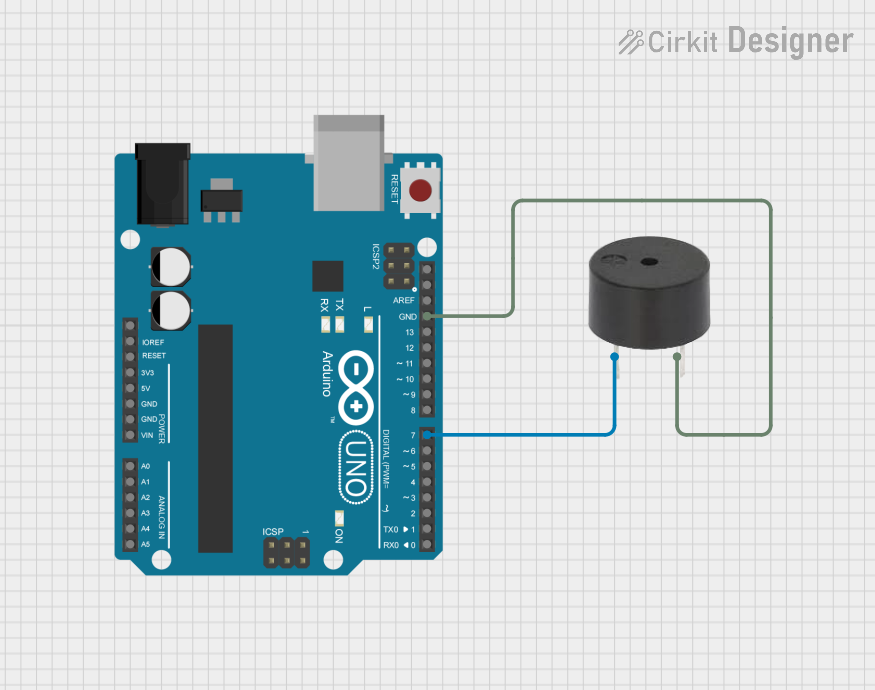
Cirkit Designer
Your all-in-one circuit design IDE
Home /
Project Documentation
Arduino UNO Controlled Buzzer Circuit

Circuit Documentation
Summary of the Circuit
This circuit consists of an Arduino UNO microcontroller board and a buzzer. The Arduino UNO is used as the central processing unit to control the behavior of the buzzer. The buzzer is connected to the Arduino such that it can be activated or deactivated through one of the digital pins on the Arduino. The ground pin of the buzzer is connected to the ground on the Arduino to complete the circuit.
Component List
Arduino UNO
- Description: A microcontroller board based on the ATmega328P.
- Pins: UNUSED, IOREF, Reset, 3.3V, 5V, GND, Vin, A0 to A5, SCL, SDA, AREF, D13 to D0.
- Purpose: Acts as the central processing unit of the circuit, controlling the buzzer.
Buzzer
- Description: An electromechanical component that produces sound.
- Pins: PIN, GND.
- Purpose: Emits an audible alert when activated by the Arduino.
Wiring Details
Arduino UNO
- GND: Connected to the GND pin of the buzzer.
Buzzer
- PIN: Connected to the D7 pin of the Arduino UNO.
- GND: Connected to the GND pin of the Arduino UNO.
Documented Code
Arduino UNO Code (sketch.ino)
void setup() {
// put your setup code here, to run once:
}
void loop() {
// put your main code here, to run repeatedly:
}
Additional Notes
- The provided code is a template and does not contain any functionality to control the buzzer. To make the buzzer sound, the digital pin D7 should be set to HIGH, and to turn it off, it should be set to LOW.
- The code should be expanded in the
setup()function to initialize the D7 pin as an output and in theloop()function to control the buzzer based on the desired logic.
This documentation provides an overview of the circuit, including the components used, their wiring, and the initial code for the microcontroller. Further development of the code is required to achieve the intended functionality of the circuit.